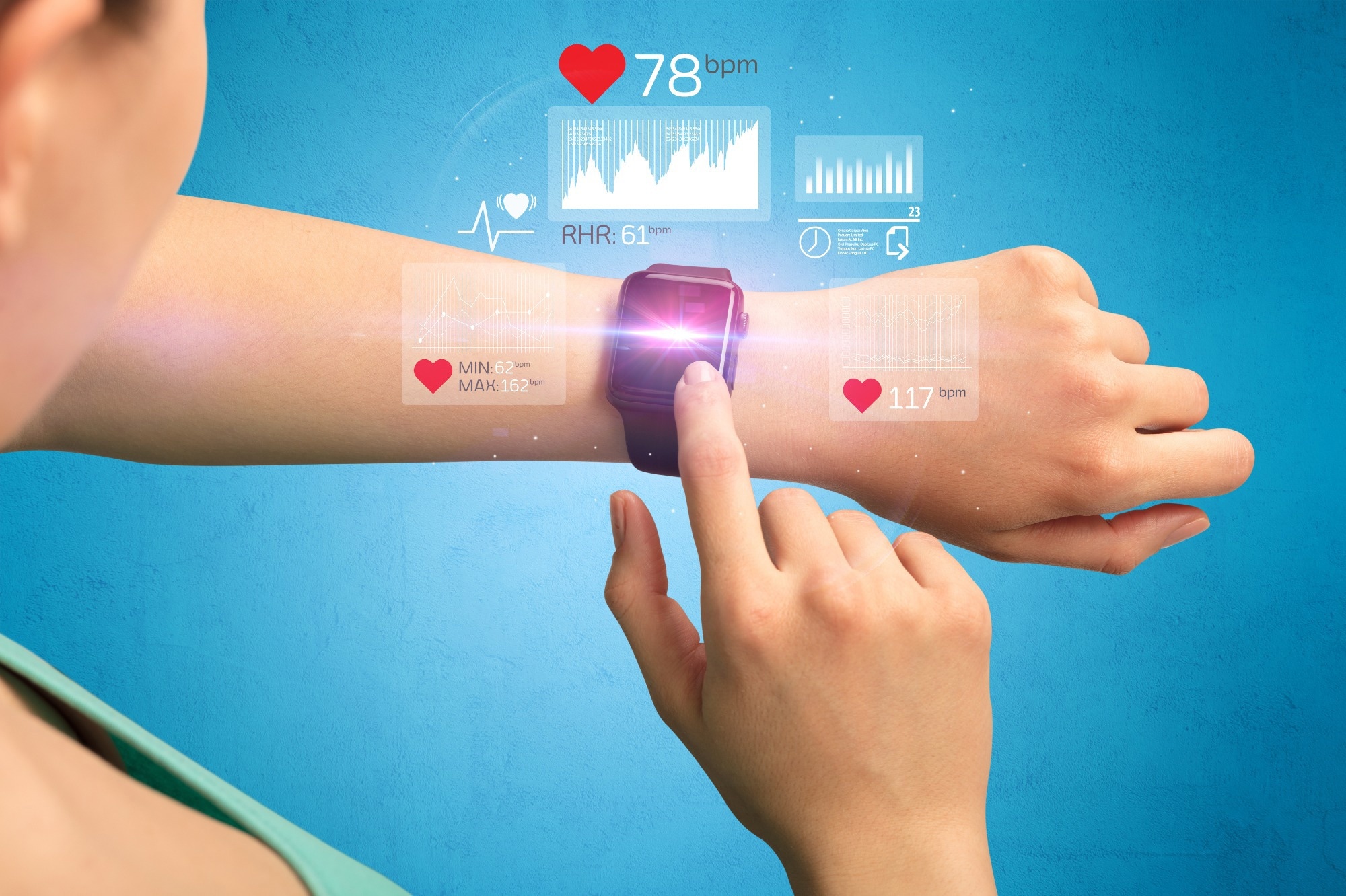Increased demand for smart devices, particularly wearables, is transforming healthcare as users are becoming incentivized to change their lifestyles for health benefits. With access to real-time data about the general status of our daily activity, more and more people are taking advantage of the ability to track daily movement, sleep, and eating habits.

Image Credit: ra2 studio/Shutterstock.com
The latest research shows that wearable devices like smartwatches can provide sustained monitoring and objective measures of Parkinson’s disease in real-world scenarios.
Published in the journal npj Parkinson’s Disease, researchers at the University of Rochester Medical Centre describe how the data generated by smart wearables could potentially mean new treatments for Parkinson’s, which could have significant benefits for those in the early stage of the disease.
This research shows that readily accessible and ubiquitous technology has the potential to detect and objectively measure severity and potentially progression of important symptoms of Parkinson’s disease.
Jamie Adams, M.D. of the University of Rochester Medical Center (URMC)
Improving Disease Monitoring
Diagnoses of Parkinson’s cases are on the rise. As such, medical professionals are trying to identify and track the disease at various stages to understand better what causes the neurodegenerative condition.
Monitoring and identifying the disease in real-time during the early stages can be of significant importance and value for health care policy, drug development, research, and long-term care planning.
Neurodegenerative diseases can be extremely complex, and Parkinson’s is no exception. The methods of treatment available today do have their limitations.
The tools typically used to monitor Parkinson’s disease can be subjective and may only be collected during clinical visits, which is limiting insofar as gaining true insight into how the disease impacts a patient’s daily life.
Symptoms, such as movement and walking difficulty, stiffness in the arms and legs, and tremors, vary in terms of severity and speed of disease progression from one patient to the next, making disease monitoring particularly difficult.
Thus, it goes without saying that improving disease monitoring capabilities would significantly impact individuals at various stages of the disease and will also give researchers access to more complete data sets to help improve the general understanding of Parkinson’s disease.
Pioneering Digital Health Technologies
Researchers working at the URMC’s Center for Health and Technology (CHeT) have been harnessing the power of digital health technologies, including wearables, to pioneer advancements in disease monitoring.
Taking various approaches, including telemedicine and remote monitoring, as well as developing mobile apps, the CHeT team hopes to improve access to care and open up participation in clinical trials via decentralization.
In 2015, senior author of the featured study and URMC neurologist Ray Dorsey, M.D., worked with his colleagues in the CHeT team as part of a collaborative project with Sage Bionetworks to develop mPower, a smartphone research application which was the first of its kind for the real-time monitoring of Parkinson’s.
mPower has also shown the ability to monitor the severity of Parkinson’s symptoms with great accuracy.
As technologies in smartwatches and other wearable devices advance, such as precision improvements in gyroscope and accelerometer components, the research implications of mPower and other similar apps are gaining more value.
Future Research and Application Potential
As part of this recent study, volunteers in two groups - a control group and a group that contained patients demonstrating early, untreated Parkinson’s - were provided with an Apple Watch, an iPhone, and research-grade sensors while conducting conventional assessments in a clinical setting.
The participants were asked to wear the smartwatch between each clinical visit and were given a variety of speech, motor, and cognitive tasks to complete on the smartphone once every two weeks.
By tracking performance on cognitive tasks, finger-taping speed, and speech using the app, the smartwatch could track and monitor the duration of tremors, arm movement, and gait features.
These findings reinforce what other studies have shown—digital devices can differentiate between people with and without early Parkinson’s and are more sensitive than traditional rating scales for some measures of Parkinson’s disease.
Jamie Adams, M.D. of the University of Rochester Medical Center (URMC)
The researchers noted that one area of improvement was the ability to detect abnormalities in speech that may have otherwise been rated “normal” by clinical investigators.
Better measures will lead to more efficient, patient-centric, and timely evaluation of therapies.
Jamie Adams, M.D. of the University of Rochester Medical Center (URMC)
Longitudinal analysis and participant input will also help identify and inform the potential measures of wearable smart devices to help develop newer, much-needed therapies for a rapidly growing population showing symptoms of Parkinson’s.
Future clinical trials and advances in digital technologies could identify key signs of early disease symptoms, improve monitoring capabilities, and boost the development of new treatments for Parkinson’s.
References and Further Reading
Adams, J.L. et al. (2023) “Using a smartwatch and smartphone to assess early parkinson’s disease in the watch-PD study,” npj Parkinson's Disease, 9(1). Available at: https://doi.org/10.1038/s41531-023-00497-x.
Michaud, M. (2023) Smartwatches may be key to development of new Parkinson’s treatments, URMC Newsroom. Available at: https://www.urmc.rochester.edu/news/story/smartwatches-may-be-key-to-development-of-new-parkinsons-treatments.
Disclaimer: The views expressed here are those of the author expressed in their private capacity and do not necessarily represent the views of AZoM.com Limited T/A AZoNetwork the owner and operator of this website. This disclaimer forms part of the Terms and conditions of use of this website.